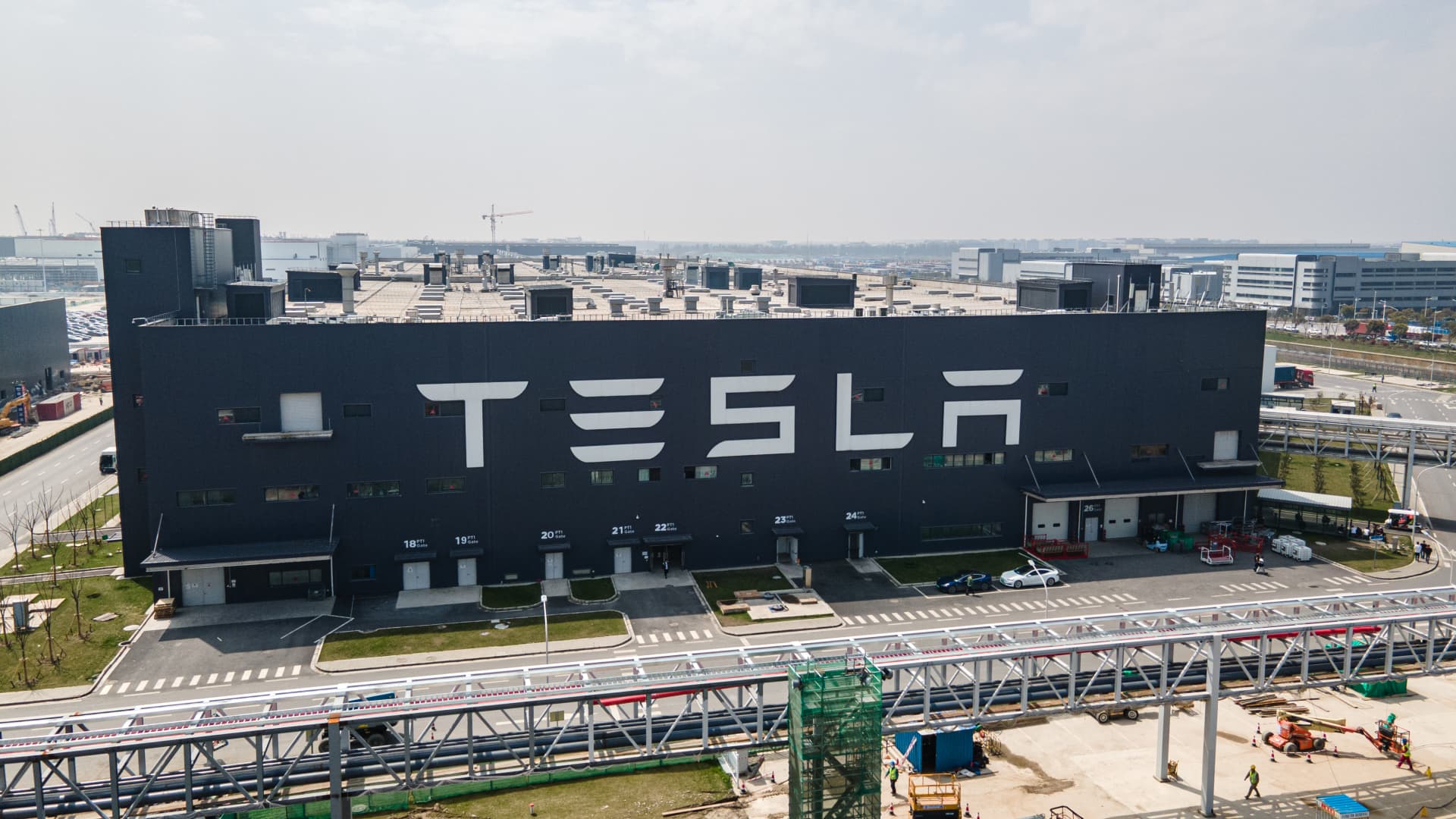Morgan Stanley has identified several stocks to invest in as electric vehicle battery manufacturing shifts to the West. As countries aim to reduce their dependency on China — which currently dominates 90% of the EV battery market — they will need to create a new supply chain for a decarbonized future, according to the Wall Street bank in a note to clients on May 12. It said that rebuilding a secure domestic supply chain and meeting government demands will be “challenging,” however, and predicted that only a handful of companies would produce batteries profitably in strategic locations. Morgan Stanley highlighted geopolitical, environmental, and economic challenges that each company could face during the transition, and ranked the firms on how best they are positioned to succeed under this framework. EV giant Tesla , auto parts maker Aptiv , and battery maker Freyr rank highly, according to Morgan Stanley, while Ford and Chinese batter maker CATL rank lower. Tesla Tesla is well placed to overcome the three challenges, Morgan Stanley said. The company leads the way with its battery technology advancements, it added, and is the only large automaker to make a profit on every EV car manufactured entirely in the U.S. “When it comes to our framework, TSLA checks all the boxes,” wrote the analysts led by Adam Jonas in a note to clients on May 11. “Not only is the company already producing battery cells domestically and with minimal environmental emmissions, they also have achieved positive unit economics via technological innovation and manufacturing prowess, and continue to drive costs down.” Aptiv Aptiv makes software and computing platforms for automakers, as well as systems that enhance vehicle safety. Morgan Stanley said while the company risks losing the business for parts currently used in internal combustion engines, Aptil will nevertheless be able to transition toward EVs with relatively few challenges. “Beyond the high voltage componentry that comes with transitioning to EVs, many OEMs [original equipment manufacturers] are targetting richer feature sets in their initial offerings, potentially posing multiple ways for APTV to be a beneficiary,” the analysts said. FREYR Battery The Norwegian company has unveiled plans to build two giga factories — the first in Norway, which will run almost entirely off hydroelectric power, and the second in the U.S. Whether this can be achieved profitably remains unknown, however. “FREY is well positioned to overcome geopolitical and environmental challenges given their government support, Western technology and material sourcing, and hydroelectric use,” the analysts said. “What remains to be seen is their ability to do so at scale with positive unit economics.” Ford / CATL Morgan Stanley noted that companies like Ford and Chinese battery maker Contemporary Amperex Technology, or CATL, might face challenges when it comes to “onshoring” due to geopolitical concerns and potential technological barriers. Earlier this year, Ford said it would collaborate with CATL on a new $3.5 billion battery plant for electric vehicles in Michigan, despite ongoing tensions between the U.S. and China. Ford will own the new facility but will license battery manufacturing technology from CATL, including technical expertise. However, the plans have drawn backlash from U.S. politicians due to their dependence on Chinese technology.
This website uses cookies so that we can provide you with the best user experience possible. Cookie information is stored in your browser and performs functions such as recognising you when you return to our website and helping our team to understand which sections of the website you find most interesting and useful.

















![Dipika Kakar breaks down, Usha Nadkarni shares her culinary struggles [Watch promo] Dipika Kakar breaks down, Usha Nadkarni shares her culinary struggles [Watch promo]](https://st1.bollywoodlife.com/wp-content/uploads/2025/01/Celebrity-MasterChef-Dipika-Kakar-Usha-Nadkarni-1.jpg)



Discussion about this post